Do you have a question about the Digital Projection Titan Quad 2000 and is the answer not in the manual?
| Brand | Digital Projection |
|---|---|
| Model | Titan Quad 2000 |
| Category | Projector |
| Language | English |
Lists all items included in the projector packaging.
Details how to connect the projector to the mains power.
Provides a general description of the projector's physical features and ports.
Identifies key components on the front and rear of the projector.
Explains the meaning of the indicator lights on the projector's control panel.
Describes the indicator lights on the projector's connection panels.
Introduces the projector's remote control devices and their operation.
Explains the angle and conditions for effective infrared remote control reception.
Details the functions of the 105-023 Rev B remote control.
Details the functions of the 105-023 Rev A remote control.
Guides on how to position the projector and screen for optimal viewing.
Instructions for mounting the projector on a flat surface.
Instructions for mounting the projector using a ceiling fixture.
Details on adjusting the projector using an optional rigging frame.
Explains how to adjust the projector's orientation for alignment.
Step-by-step instructions for installing a lens onto the projector.
Basic steps for turning the projector on and off.
Procedure for powering on the projector and entering standby mode.
Procedure for powering off the projector and entering standby mode.
How to choose between video sources and test patterns.
How to adjust zoom, focus, and position using the lens controls.
Adjusting image settings like orientation, keystone, and picture parameters.
Details the various input and output connectors on the projector.
Describes the connectors located on the projector's rear panel.
Details connectors specific to 3D projector models.
Explains how to connect 3D sources and signals to the projector.
Describes how to connect external control systems via LAN or RS232.
Explains how to navigate and use the projector's on-screen display menus.
Describes the basic structure of the projector's menu system.
How to use and select items from drop-down lists within menus.
How to adjust settings using slider controls in the menus.
How to execute commands within the projector's menu system.
How to input text or numeric values into editable fields.
Overview of the projector's main functions and menu options.
Introduces the primary menu structure for accessing projector functions.
Options for adjusting lens functions like zoom, focus, and presets.
Settings for adjusting picture quality such as brightness and contrast.
Controls for color settings like gamut, black level, and gain.
Settings for adjusting aspect ratio, keystone, and other image geometry.
Configuration for blending multiple projector images for a seamless display.
Settings for Picture-In-Picture (PIP) display modes.
Options for configuring and optimizing 3D viewing.
Information and control for projector lamps, including life and power.
Access to system configuration, network, and display settings.
Displays system, lamp, and configuration details.
Overview of controlling the projector via external systems.
Details the commands for controlling projector functions via serial or LAN.
How to use the web interface for projector control and monitoring.
Explanation of the Digital Micromirror Device technology used in the projector.
Guidance on selecting the appropriate lens based on projection needs.
Information on screen size and fitting the image to the display.
How different aspect ratios affect image display.
Explanation of interlaced, progressive scan, and pulldown techniques.
List of part numbers for available projector lenses.
Charts to help select the correct lens based on projector and screen specifications.
Table detailing supported video input standards and resolutions.
A structured overview of all projector menu options and settings.
Pinout diagrams and specifications for projector connectors.
Definitions of technical terms used in the manual.
Detailed technical data including models, inputs, and power requirements.



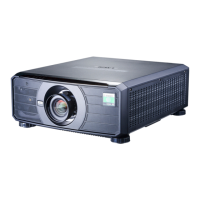

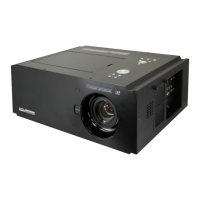
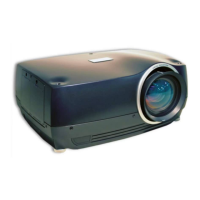
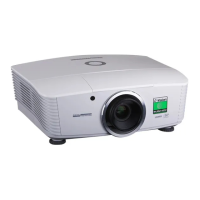
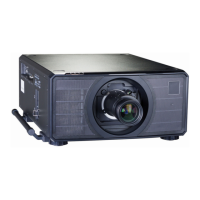
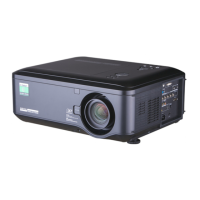
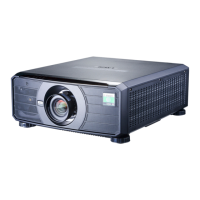
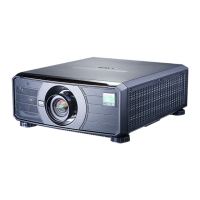
